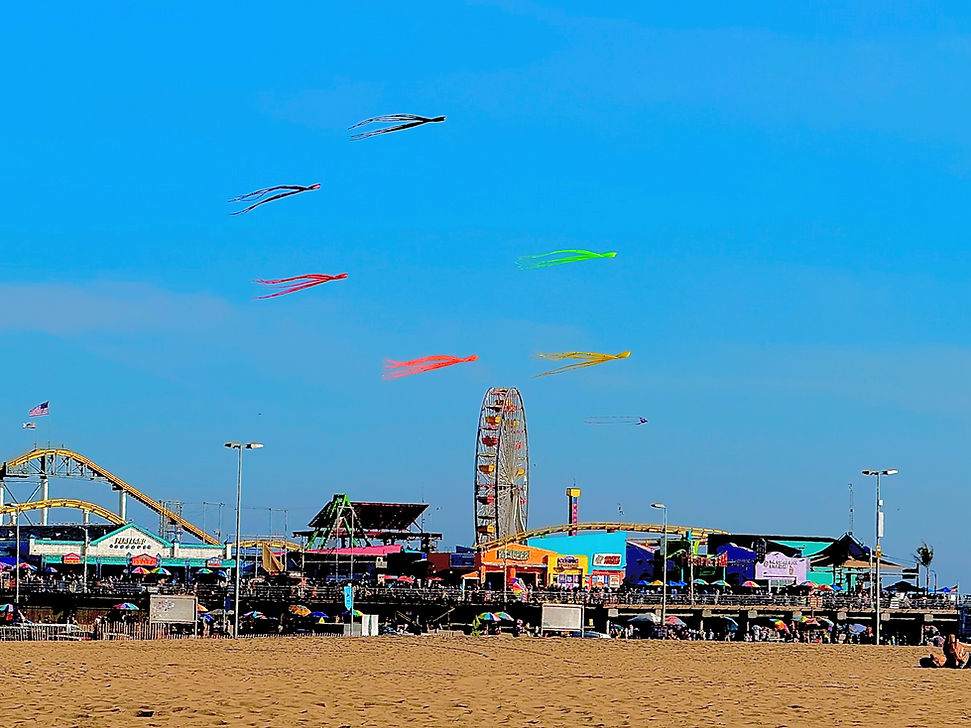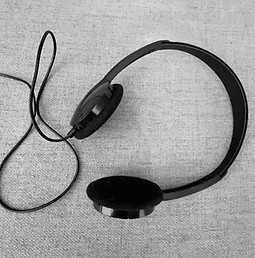
Heading 6
Santa Monica Pier, California
"You can't go back and change the beginning, but you can start where you are and change the ending." C.S. Lewis
What is EMDR and how does it work?
EMDR, or Eye Movement Desensitization Reprocessing, developed by renowned psychologist Dr. Francine Shapiro (1948-2019), is a groundbreaking technique that targets trauma, both acute PTSD (Post Traumatic Stress Disorder) and complex trauma. When we experience trauma - whether it's a single overwhelming event or a series of difficult experiences over time, it can get "stuck" in the brain's emotional center, known as the Limbic System.
The Limbic System, made of rubbery horseshoe shapes, bulbs and ventricles, is located right in the center of the brain. It is built specifically to handle emotions, cravings, drives, memories, fight, flight or freeze, along with some automatic body funtions.
Check this section out if you want a detailed description of the science involved. There will not be a quiz!

Neocortex
Limbic System

By contrast, the folded, interwoven, noodle-like Neocortex is built specifically for processing information. It is structured to integrate thoughts with perspective, interpretation and reason. Importantly, some parts of the Neocortex also manage motor activity.
The Limbic System can sense, remember and express intense emotions and memories, especially in unsafe or overwhelming circumstances. This can be helpful, but in the long term, we need the Neocortex to help us regulate and make sense of experiences.
EMDR bridges the gap between these two parts of the brain. Through gentle, rhythmic motor stimulation, like guided eye movements or alternating taps or sounds, both hemispheres of the brain are engaged. This bilateral stimulation activates the motor areas within the Neocortex, allowing the brain to revisit and process formerly stuck memories using the whole brain. The result is that difficult thoughts or memories begin to soften and lose their emotional grip.
Many people describe it like this: a once vivid painful memory starts to feel like a black and white photo hanging on a distant wall. It's still there, but no longer wields as much influence over their day-to day-lives. EMDR helps people gain perspective, feel safer in the present and often begin to access a sense of self-compassion.
Santa Monica Beach, CA
Check this section out if you want a session by session rollout.
What to expect
The usual approach to using EMDR includes 8 phases, starting with an introduction to the EMDR process, and a thorough discussion about the client's history. With this information, the therapist will help the client to note and list internal and external resources available to them.
Next, the therapist will assist the client to determine what "negative cognitions" (or unproductive thinking patterns), are distressing



After practicing some calming and soothing protective exercises, the client will be ready to start the "BLS" or bilateral stimulation.
Available with equal efficacy in-person or through online teletherapy, the BLS comes in the form of soft alternating audio taps via headphones, small handheld paddles that provide gentle alternating vibrations, or a visual prompt, often a moving ball on the computer screen (see photos above and to the left).
After discussing the chosen target, the BLS is set in motion for about a minute at a time, and the client is asked to simply notice what thoughts, images and feelings come to mind.
or holding them back, and what "positive cognitions" (or productive and helpful thinking patterns) would be better put in their place. This will then lead an exploration and listing of "targets", usually memories associated with the negative cognitions, that the client would like to work on.
The therapist will listen to the client's experience from the BLS round. Frequently, the therapist will ask the client to continue to notice what thoughts, images or feelings have shown up for them and then will start another round. At times the therapist will check to make sure that the client would like to continue.
Sometimes the therapist will offer a reflection, or ask a question to encourage the client's thought process. The therapist may be informed by some of the other approaches and theories listed on the "Other Approaches" page, below, if appropriate. Borrowing strategies from these modalities can be very helpful to nudge a client's EMDR experience forward. Each person and situation warrants a customized design. The number of rounds of BLS can vary from client to client and session to session depending on the client's individual experience.
The BLS portion of therapy may take several sessions, or many, depending on the complexity of the target.

The progress of the the BLS will be noted at the end and/or the beginning of each session. When a satisfying degree of improvement has been achieved, the therapist will assist in the installation of the positive cognition using the same BLS techniques. This may conclude the EMDR therapy, or the client may opt to tackle more "targets" if they feel it would be helpful.
EMDR and all therapy is client driven. While the therapist may suggest or encourage a method or approach, the client always has the say about what feels right to them.
Moro Bay, CA
Approaches that work with EMDR

Attachment Theory
Attachment Theory, developed originally by psychiatrist Dr. John Bowlby (1907-1990) and psychologist Dr. Mary Ainsworth (1913-1999), is the study of how our early childhood relationships with our caregivers shape our self-concept and future relationships with others. Insight into these early patterns allows for making desired changes.
Santa Monica, CA
Adlerian Therapy
Adlerian Theory is an all encompassing future and goal-oriented approach that encourages finding a sense of belonging, purpose and meaning in life, all while taking early childhood and family constellation into account. Psychiatrist Dr. Alfred Adler (1870-1937) added to strict Freudian thought as he emphasized the importance of social and community engagement in his theory. Adler is the father of much of modern psychotherapy including CBT, Family Systems, Narrative, and more.

Big Bear Lake, CA

CBT- Cognitive Behavioral Therapy
CBT, or Cognitive Behavioral Therapy, developed by psychiatrist Dr. Aaron T. Beck (1921-2021), helps you to catch yourself in the habitual cycle of negative thoughts leading to upset feelings leading to unhelpful behaviors. This technique sometimes includes "homework" such as journaling and keeping charts that support identifying and ultimately breaking the non productive cycles.
Catalina Island, CA
Gestalt
Gestalt Therapy, developed by psychiatrist Dr. Fritz Perls (1893-1970), emphasizes personal responsibility and uses the "here and now" to explore areas of concern, sometimes by experientially reenacting old patterns of behavior and relationships during the therapy session, and engineering new healthy alternatives.
Internal Family Systems
Internal Family Systems, developed by Dr. Richard Schwartz in 1970, is a therapeutic modal that views the mind as made up of distinct "parts," each with its own internal voice, emotions, motivations - almost like an internal family. None of these parts are "bad", and they all have the intention of protecting us or helping us cope, even if they act in unhealthy ways at times. The parts interact with each other and with what IFS calls the "self", your calm compassionate inner core. The goal of IFS is to unburden the parts of unhelpful beliefs and emotions, and to build a trusting relationship between the parts and the self.

Joshua Tree, CA

Mindfulness
Mindfulness in psychology specifically includes the use of meditation, either guided, mantra or breath focused. All methods are effective.This practice has been empirically proven to bring about changes in the brain structure (brain plasticity) that positively enhance a person's mental sense of well-being and encourages greater emotional regulation. Some guided meditations are included in the early EMDR
phases.
Santa Monica, CA
About Juli Juteau, LMFT
License # 112351

Background
I started my professional career as a documentary filmmaker, a field that offered me the opportunity to have in-depth conversations with a multitude of people. Over and over again, I found myself so engaged in getting to know a new person, I always wished the interviews wouldn't end. When I decided to broaden my horizons and become a psychotherapist, I discovered I could finally fulfill that desire--and more! In therapy, the "interview" becomes an on-going relationship dedicated to the exploration and understanding of the client, their inner workings, their relationships, their healing, their dreams and their goals. Being allowed to share in the self-discovery and evolution of another person is a true gift.
Education
-
B.A. in Liberal Studies, University of California, Santa Barbara
-
M.F.A. in Documentary Film, UCLA
-
M.A. in Psychology, emphasis Mindfulness, Phillips Graduate Institute
-
Gestalt Therapy and neuroplasticity Training
-
EMDR training, The Institute for Creative Mindfulness
-
Gottman Phase I training
-
Internal Family Systems training
-
Trained in Vedic Meditation by Light Watkins

California Matilija poppy

Experience
-
School Counselor through Outreach Concern K-8
-
Associate Therapist at The Maple Counseling Center
-
Associate Therapist at The Wheel of Wellbeing
-
Co-Group Therapist in parenting at Early Childhood Development Associates
-
Private Practice
Antelope Valley, CA
Specialties
-
Attachment
-
Anxiety disorders
-
Depression
-
Career or professional concerns
-
Creative blocks
-
Empty nest
-
Grief
-
Life Transition
-
Parenting
-
Pregnancy, Prenatal, Postpartum, infertility
-
Relationship issues, (friendship, work, marriage, divorce, infidelity etc.)
-
Self Esteem
-
School/University issues
-
Stress and Trauma

Sequoia National Park, CA
Rates, Insurance & other

Rate per 55 minute session: $200
Free 20 minute consultation available
Insurance accepted:
Aetna and United (and affiliates) via the Alma.com platform.
Co- pays vary depending on the policy.
Super bills available to other insurance companies as an out of network provider
Sequoia National Park, CA
Recommended Reading & Links

Books & Authors
Alphabetical order by author
A Safe Base
by John Bowlby
and all titles by John Bowlby, Mary Ainsworth and Mary Mane
Why We Love
Anatomy of Love
and all titles by Helen Fisher
Aware
No Drama Disciple
The Whole Brain Child
and all titles by Dan Siegel
Internal Family Systems,
and all titles by Richard Schwartz, and Martha Sweezy
Memories, Dreams Reflections
The Red Book
Man and His Symbols
and all titles by Carl Jung
Non Violent Communication
and all titles by Marshall Rosenberg
Emdr, The Breakthrough Therapy For Overcoming Anxiety, Stress, And Trauma
and all titles by Francine Shapiro
and Margo Silk Forrest
The Body Keeps The Score by Bessle Van Der Kolk, MD
More Authors to investigate:
Alfred Adler, Erik Erikson, Viktor Frankl, Sigmund Freud, Abraham Maslow

Mono Lake, CA

Helpful Links
SUICIDE HOTLINE:
In emergencies: DIAL 988
or go to:
https://www.988california.org/
National Alliance of Mental Illness
https://www.nami.org/
American Psychological Association
http://www.apa.org
Will Rogers State Park, CA
Contact:
California Coast EMDR services are available to all California residents. Please email at the address below with questions or a request for a consultation, or fill out the contact form here.
Address
In-person sessions
meet in Santa Monica, CA. The address will be provided after initial online meeting.
Phone
424-501-5110
